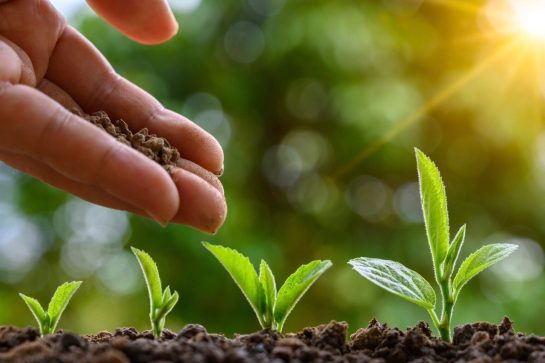Right in the heart of Sri Lankan tradition, the Kohomba tree – known as Margosa or Neem (Azadirachta indica) – is a cornerstone of natural healing. Revered in Ayurvedic and Sinhala native medicine, this tall tree with spreading branches has been a guardian of health for centuries, its leaves, bark, and flowers offering remedies that span generations and communities across the island.
A tree of many virtues
In Sinhala, it’s called Kohomba, while Tamils know it as Vembu or Veppai. Its Sanskrit name, Nimbha, hints at its ancient roots in the Indian subcontinent, but Sri Lanka has made it its own. Traditionally, Kohomba trees were planted in front of homes to purify the air and repel insects – a practice still seen in rural villages today. The tree’s antiseptic qualities are well-documented in Ayurveda, with experts like Chandi Perera from the University of Colombo noting its effectiveness against infections. During outbreaks of diseases like chickenpox, families would lay neem leaves on beds to soothe blisters, a remedy passed down through Sinhalese and Tamil households alike.
The Kohomba’s medicinal uses are vast. Fresh leaves, mixed with salt and honey, are a Sinhala native remedy for intestinal worms, while the juice is prescribed for jaundice and skin conditions. Externally, leaves are applied to boils, ulcers, and wounds, harnessing their antiseptic properties. In Muslim communities, who often speak Tamil and share cultural practices with their neighbors, Kohomba branches are hung at gates to signal contagious diseases – a silent warning rooted in folklore. Burghers, descendants of European settlers, have also adopted these practices, blending them with their own traditions of herbal care.
Cultural and spiritual significance
In Sri Lanka, the Kohomba tree is more than a plant – it’s a cultural icon steeped in tradition. During the Sinhala and Tamil New Year in April, Kohomba leaves play a central role in rituals symbolizing purification and renewal. Families prepare kohomba kanda (a bitter porridge made with neem leaves) to mark the New Year, signifying the acceptance of life’s bitter and sweet moments. This aligns with the greetings of the season, like “Subha Aluth Avuruddak Veva” in Sinhala and “Puthandu Vazhthukkal” in Tamil, which celebrate unity and hope.
In Buddhist and Hindu traditions, Kohomba is considered a protective force. Its leaves are hung above doorways to ward off evil spirits, and its branches are used in rituals to cleanse sacred spaces. The tree’s bitter taste is a reminder of humility and resilience, values cherished in Sri Lankan spirituality. In villages, elders tell stories of how Kohomba trees sheltered communities during floods, their sturdy trunks standing firm against nature’s fury, a testament to their enduring strength.
Beyond its leaves, every part of the Kohomba tree heals. Dried flowers serve as a tonic for fever, and in Tamil Nadu, they’re used in a dish called Veppampoo charu (neem flower rasam). In Sri Lanka, the seeds are crushed into an insecticide or hair wash, while twigs are chewed to clean teeth – a habit common across ethnic groups. For those managing diabetes, a preparation of Kohomba flowers is a trusted Ayurvedic food, balancing blood sugar naturally.
Kohomba in sustainable practices
Kohomba also supports organic farming across Sri Lanka. In regions like Anuradhapura, farmers use neem-based fertilizers to enrich the soil, reducing reliance on synthetic chemicals. The tree’s fallen leaves decompose into nutrient-rich mulch, fostering a cycle of renewal that mirrors the principles of analog forestry – mimicking nature to restore ecosystems. By integrating Kohomba into agroforestry systems, Sri Lankan communities ensure food security, protect the environment, and create economic opportunities, all while honouring traditional knowledge.
Challenges and conservation
Despite its widespread use, the Kohomba tree faces challenges. Overharvesting for medicinal and commercial purposes can strain wild populations, while deforestation threatens its natural habitat. Climate change, with its unpredictable rains, also impacts the tree’s growth, particularly in drier regions like Hambantota. Conservation efforts are underway to address these issues, with organizations encouraging the planting of Kohomba in home gardens, schools, and community lands. Initiatives like the Sri Lanka Forest Department’s reforestation programmes include Kohomba among native species, ensuring its legacy for future generations.
Why celebrate the Kohomba tree?
The Kohomba tree isn’t just medicine; it’s a symbol of resilience and unity. Whether in a Sinhalese village, a Tamil household, a Muslim community, or a Burgher home, its presence weaves a shared thread through Sri Lanka’s diverse culture. As we embrace the wisdom of our ancestors, let’s celebrate the Kohomba tree – a gift from nature that continues to heal, protect, and inspire.
The Kohomba tree is a gift from nature, a bridge between Sri Lanka’s past and its sustainable future. Its leaves heal, its seeds protect, and its presence inspires. Whether you’re sipping a bitter Kohomba tea for health, or planting one in your backyard, you’re partaking in a tradition that spans centuries. The next time you pass a Kohomba tree, pause to appreciate its quiet strength – a guardian of health and harmony, rooted deep in the heart of Sri Lanka.
Have you experienced the benefits of the Kohomba tree or seen it in action in Sri Lanka? Share your stories below!
Azadirachta indica, Margosa (E), kohomba (S), neem (I), vempu (T), I (Burma)
Margosa is a tree with a straight trunk, widespread branches, brown rough bark, crowded leaves, pinnate: leaflets paired with terminal, opposite or alternate, lanceolate-sickle-shaped.


Leave a Reply